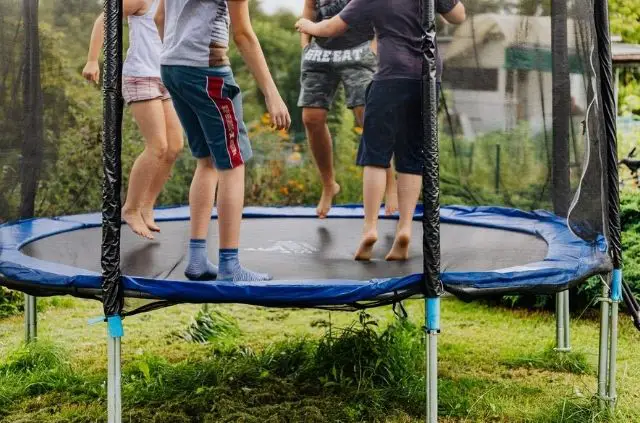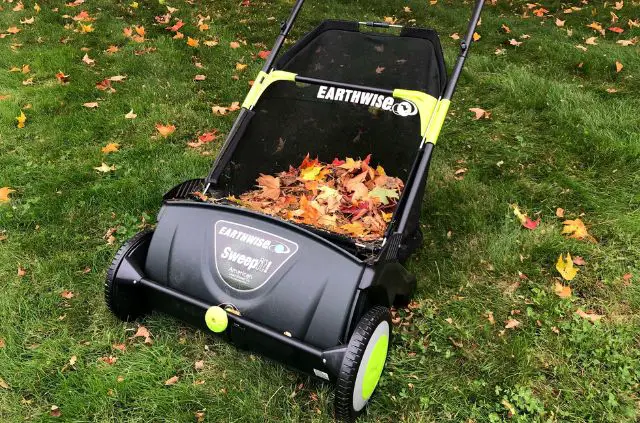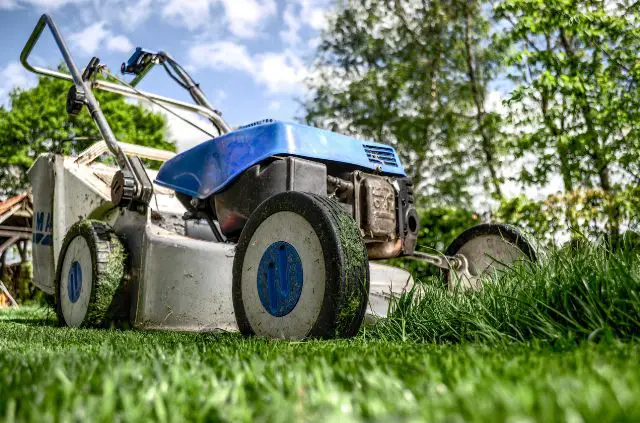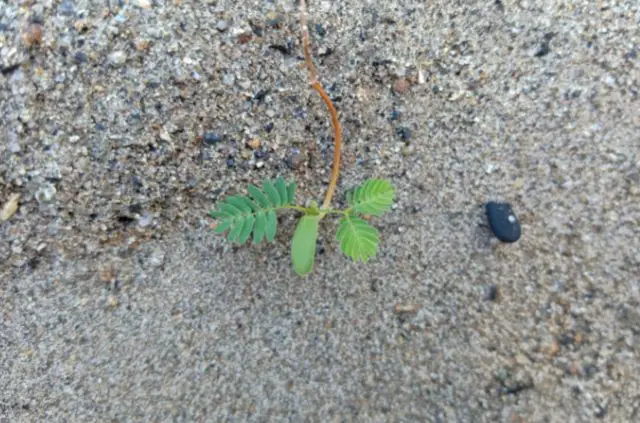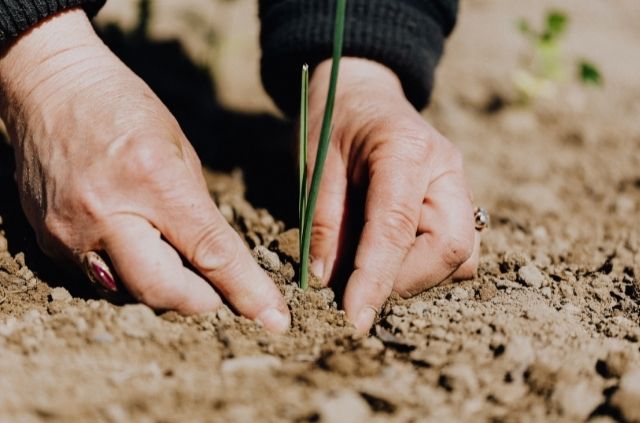Growing Grass with Dogs Step by Step
Getting any type of seed to grow outside can be challenging enough. But growing grass with dogs is another story. Dogs will not only go to the bathroom on your lawn, but they also dig, roll around, and run on the surface.
The good news is there are a handful of methods you can try to grow new grass. This will take more work for you, but you need to protect delicate areas in order to establish a healthy lawn as a dog owner.
How to Grow Grass with Dogs
Growing grass with dogs and other pets can be done, but it takes a little more planning. You will need to protect delicate areas with temporary fencing, focus on one section at a time, and use pet-safe fertilizer.
1. Plan Ahead
Growing grass with dogs starts with proper planning. That means you will need to select the right time of year to plant grass seed. For most people, the fall is the best time to grow grass and overseed.
As the summer months wind down, the air temperature begins to drop and the soil stays warm. This change creates the best scenario for growing grass. There will also be more rainfall this time of year to water seedlings.
2. Cut Existing Grass
The first step to growing new grass with dogs is to mow your lawn. It’s better to trim healthy grass before moving on to the next step. Doing this will help you identify places in the yard that need more work.
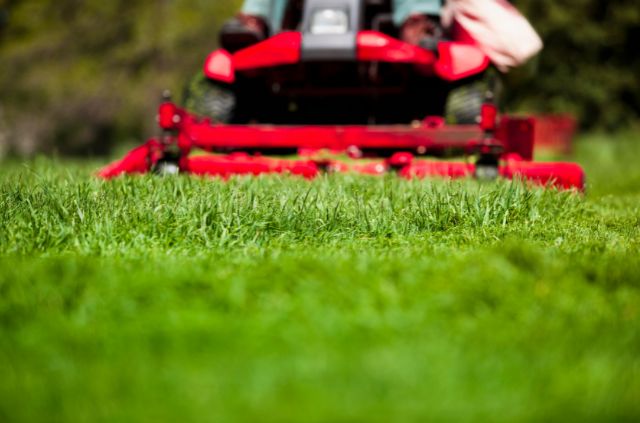
You can accomplish this by setting the mower height between 1.5 and 2 inches. When mowing you will also need to remove the grass clippings. You can pick clippings up with a bagger attachment, or lawn sweeper.
3. Try Core Aeration
After grass has been mowed to the correct height, you can then focus on the soil. If you want to get the most out of your future lawn, planting new grass seed on existing turf begins with core aeration.
This machine will drive over the surface and remove small dirt plugs. Core aeration helps relive compacted soil and provides essential nutrients to grass roots. But it also creates a space for new grass seed to germinate.
4. Identify Problem Areas
It’s no surprise that dogs can ruin your lawn. But you might find that some locations are worse than others. That’s why it’s best to identify and correct these problem areas first, to create even better results.
You can begin by using a shovel to remove places with dead grass. Then fill in the holes with fresh soil and even out the surface. A tiller can also be used to break down compacted soil before planting.
5. Plant New Grass Seed
After cutting the grass and aerating, new grass seed is ready to be planted. This process can be done by using a walk-behind spreader available at most hardware stores. Spreaders are ideal for putting down seed evenly on the lawn.
They will have settings that allow you to control how much seed is being dispersed. It’s important to follow the directions on your specific product. Most grass seed will tell you to walk at a brisk pace, while doing multiple passes on the ground.
6. Use Plenty of Water
There are two different approaches when it comes to watering new seed. Some people prefer to water in short amounts more frequently. While others tend to water heavily once, or twice a week.
Both options will work, but the later is better. When you irrigate the lawn heavily, water will have a chance to soak deep into the soil. As a result, this will help germinate the seed and make grass roots longer (and stronger).
Additional Tips for Growing Grass with Dogs
Following the steps above will help you establish a healthy lawn. But in order to effectively protect the grass, there are additional steps you can follow. You can better promote germination by following these methods.
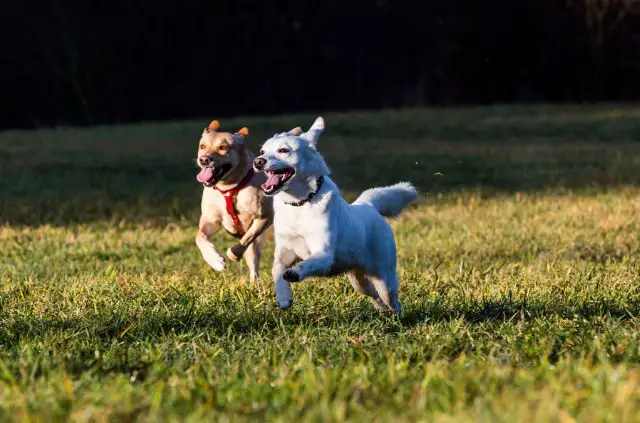
Don’t do the Whole Lawn at Once
If your yard is in terrible shape, it’s best to work on different sections at a time. This will lengthen the project – but it’s much easier to keep your dog off new grass seed when they can do their business on old sections.
You can first do the front yard, followed by the backyard (or vice versa). Just know that until the seeds have germinated and start producing grass, you will need to keep your dog leashed whenever they are outside.
Protect Delicate Areas
There is another solution if keeping your dog on a leash is too much work. All you need to do is install a temporary plastic fence around delicate areas, or bare sections where there’s only fresh dirt and seed.
You can’t risk anyone walking on these places – whether that be pets or humans. Temporary vinyl fencing is cheap and available at most hardware stores. This material can be safely held in place with wooden sticks around the edge.
Try Different Types of Grass
Another way to protect growing grass with dogs is to plant tough varieties. You can try Tall Fescue, Perennial Ryegrass, Kentucky Bluegrass, or a combination of different types for more durability.
It’s important to note that the type of grass you plant will vary depending on your climate. But combining different grass seed is a great way to offer protection from dogs and high traffic areas.
Use Fertilizer Safe for Pets
It’s no secret that fertilizer can provide many benefits to grass. The problem is that many of these products contain chemicals that can be harmful to dogs. But you can try using a pet-safe fertilizer to give your lawn a boost in nutrients.
A general rule to follow is that you can apply fertilizer when grass is most actively growing. This will usually happen in the spring, as your lawn comes out of the dormancy period after winter.
Wrapping Up
By now it should be clear that growing grass with dogs is possible. The only difference is that you will need to put in a little more work, so grass can start growing.
Protecting new grass seed from your pets is essential, especially during the germination stage. Remember to keep pets off your lawn until grass roots are established and the grass is at least 2 inches in length.
You can do this by working in small sections at a time, protecting the areas with fencing, and using stronger types of grass. And don’t by afraid to use a pet-safe fertilizer, so that your lawn can continue thriving throughout the year.
Search Terms
- Growing grass with dogs
- How to grow grass with dogs

